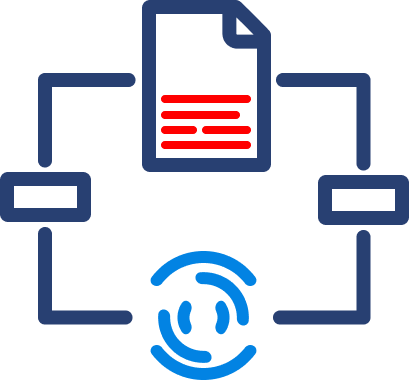How to Set Up Ramp
Spending made smarter. From corporate cards to expense management, Ramp covers everything in between. Robust accounting automations and simple procurement processes create a seamless experience for spend management.
How to Set Up Ramp: A Step-by-Step Guide
This guide will walk you through setting up Ramp for corporate spending, expense management, and accounting automation to help control and optimize business finances.
Step 1: Create a Ramp Account
- Go to Ramp’s Website
- Visit Ramp and click “Get Started”.
- Enter Your Business Information
- Business name, entity type (LLC, C-Corp, S-Corp), and EIN.
- Company size and estimated monthly expenses.
- Verify Your Identity & Business
- Provide basic financial details (bank statements may be required).
- Upload a government-issued ID (for security verification).
- Ramp may require additional documents for underwriting approval.
- Wait for Approval
- Approval usually takes 1-3 business days.
- Once approved, you’ll receive access to the Ramp dashboard.
Step 2: Link Your Business Bank Account
- Go to “Bank Accounts” in the Ramp Dashboard.
- Click “Add Bank Account” and select your bank provider.
- Authenticate using Plaid (recommended) or enter details manually.
- Once linked, Ramp will use the account for payments, reimbursements, and spend tracking.
Step 3: Issue Virtual & Physical Corporate Cards
- Go to the “Cards” Tab in the dashboard.
- Click “Create a New Card”.
- Choose:
- Physical Card – Standard corporate card for in-person and online use.
- Virtual Card – Single-use or recurring cards for online purchases and subscriptions.
- Set spending limits and merchant category restrictions.
- Assign the card to yourself or an employee.
Step 4: Set Up Spend Controls & Expense Policies
- Define Expense Rules
- Go to Settings > Expense Policies.
- Set approval workflows based on purchase amount.
- Restrict spending categories (e.g., travel, software, dining).
- Enable Auto-Blocking for Unauthorized Transactions
- Ramp automatically flags or blocks expenses outside policy guidelines.
- Configure Receipt Matching & Automation
- Enable AI-powered receipt capture to auto-match transactions.
- Employees can text or email receipts directly to Ramp for tracking.
Step 5: Invite Team Members & Set Roles
- Go to “Team” in the Dashboard.
- Click “Invite Users” and enter employee emails.
- Assign roles and permissions:
- Admin – Full access to manage settings, approvals, and transactions.
- Manager – Can approve expenses for their team.
- Cardholder – Can use a Ramp card but cannot approve or manage settings.
- Bookkeeper – View-only access for accounting and reconciliation.
Step 6: Connect Ramp to Your Accounting Software
- Go to “Accounting” in the Dashboard.
- Click “Connect” and select your accounting system:
- QuickBooks
- Xero
- NetSuite
- Sage Intacct
- Sync transactions and map expense categories for automatic reconciliation.
- Set custom accounting rules to match your chart of accounts.
Step 7: Automate Vendor Payments & Accounts Payable
- Go to “Payments” > “Pay Vendors”.
- Add a new vendor with bank details.
- Choose ACH, wire transfer, or check payment.
- Set up auto-pay for recurring expenses (software, rent, utilities).
- Track payment status and approvals in real time.
Step 8: Monitor Spend & Optimize Savings
- Use Ramp’s AI Insights
- Go to the “Savings Insights” tab to identify wasteful spending.
- Find opportunities to negotiate SaaS pricing or cut unnecessary expenses.
- Review Real-Time Spend Reports
- Track spending trends by department, employee, or vendor.
- Set up alerts for unusual transactions or policy violations.
Final Checks Before Full Deployment
✔ Ensure bank account is linked correctly for payments.
✔ Test expense policy workflows with a small group.
✔ Verify team roles and permissions for security.
✔ Automate vendor payments and reimbursements for efficiency.
✔ Review accounting integrations and sync settings.
.avif)
Bill Pay
Bill.com
Cloud-based, online business payments solution. Bill.com facilitates fast, secure ACH payments and automates approvals to cut time spent on tedious accounts payable jobs by 50% or more.
Bill Pay
Ramp
Spending made smarter. From corporate cards to expense management, Ramp covers everything in between. Robust accounting automations and simple procurement processes create a seamless experience for spend management.
Our Services
Full Send Finance exists to elevate your data.
Outsourced Accounting
With a delightful blend of technology and human wizardry - we help establish your accounting ecosystem, clean up current ones, and manage them on an ongoing basis.
Financial Planning & Analysis
We provide beautiful financial reporting and dashboarding to help you have financial clarity within your business at any point in time.
Fractional & Technical Accounting
We are human experts in accounting. We love solving problems and providing our clients with some much needed confidence that a solution exists.

Data Automation
We take your manual data exports, uploads, and reformats and turn them into a steady stream of consistent data - wherever you need it.
Data Analytics
We take your dusty excel report or dashboard and turn it into a multi-dimensional tool that allows you to cut the data however you like.

Fractional Data
From data strategy and team education to one-off data architecture projects, we support your temporary projects as your needs evolve.


